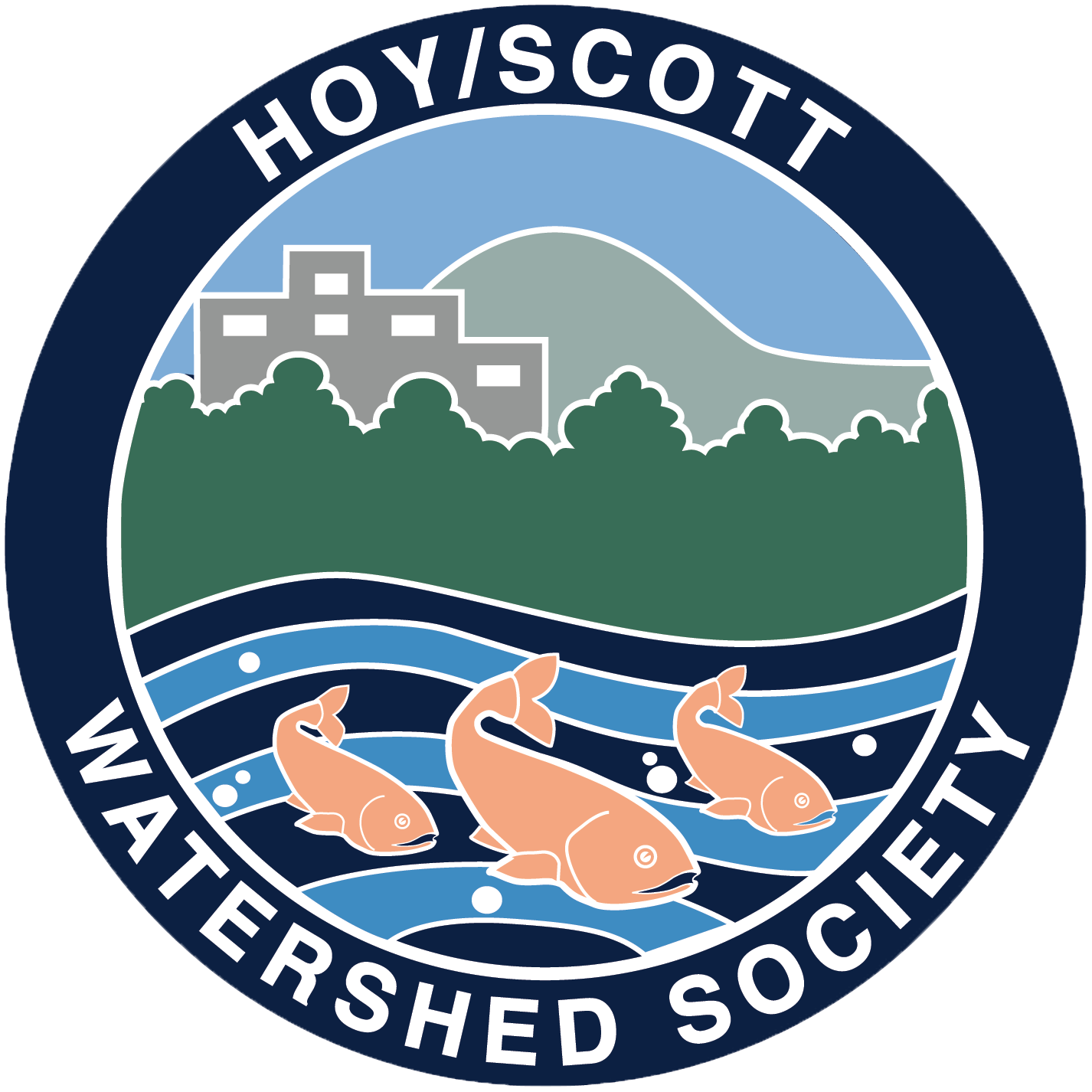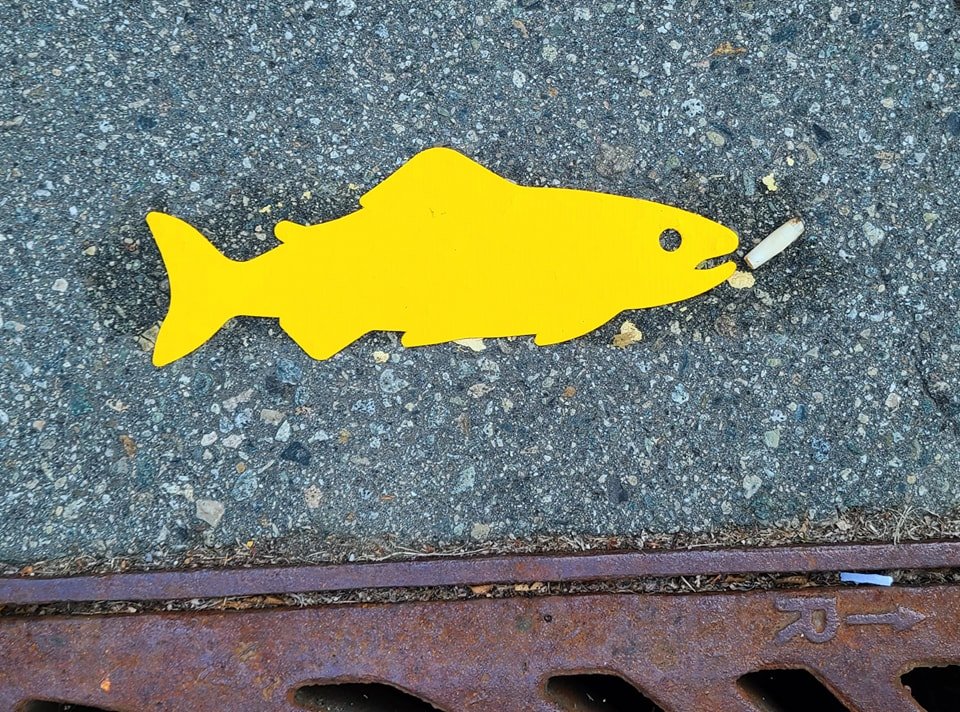The City of Coquitlam took a water sample the night of the 29th. HSWS president was around the area for about 2 hours and reported smelling a chemical similar to chlorine or ammonia, and could also taste chemical on her tongue.
The following day the hatchery was visited by various media houses and in the afternoon the dead fish were removed and buried.
The society was advised that the City looked into homes that have pools.
A week later the remaining fish were fin-clipped and another count was done. We’re pleased to report that 2700 fish survived. There is no way of knowing how many fish, crawfish, and lamprey died in the stream.
A report of the water testing was provided to the Society in June, but there was no water quality parameter that was identified as the culprit, but the ammonia levels at Hoy creek storm outfall north of the hatchery had considerably high levels which would could point to high concentrations of bleach or chlorine.
A community door-to-door education initiative will be planned by the society and hatchery manager Rodney Lee sent the following Letter to the Editor:
It only takes the carelessness, thoughtlessness or malicious action of a single individual to destroy life in our waterways. Unfortunately, this occurred on Hoy Creek last week. A highly toxic substance was dumped into a storm drain. This substance proceeded to kill thousands of fish and other aquatic animals in Hoy Creek. The loss of our hatchery salmon were dramatic. We, as hatchery volunteers, have spent countless hours raising our fish. We lost a good many of them in an instant. The losses amongst the wild fish populations truly heartbreaking as these are the populations we work hard to protect. They are priceless.
It’s been a week since this has occurred. I return to look at the Creek to find a single Coho fry present at the Hatchery bridge — a place where hundreds of wild fish lived a short while ago.
Please be mindful - everything entering a storm drain ends up in a creek. Creeks contain aquatic life that can’t survive pollution being dumped into the habitat. As members of the public, we all have a duty to steward and protect the environment that we live in. Should you witness any suspected pollution being dumped into a storm drain, please take immediate action to report it to the authorities:
City of Coquitlam Engineering 24 hour emergency (Municipal): 604-927-3500
Observe, Record, Report (Federal): 1-800-465-4336
Report all poachers and polluters (Provincial): 1-877-952-RAPP
My heartfelt thanks,
Rodney Lee
Hatchery Manager, Hoy Creek Hatchery
Vice President, Hoy/Scott Watershed Society
Global News: Pollution suspected in mass fish die off in Coquitlam
Tri-City News: Toxic Water Kills Hundreds of Fish in Coquitlam Creek
CTV News: Hundreds of Fish Die at Coquitlam Hatchery
Tri-City News: Coquitlam trying to fInd the source of fish kill
Daily Hive: Unknown Pollutant Causes Mass Death of Salmon in Coquitlam Hatchery










